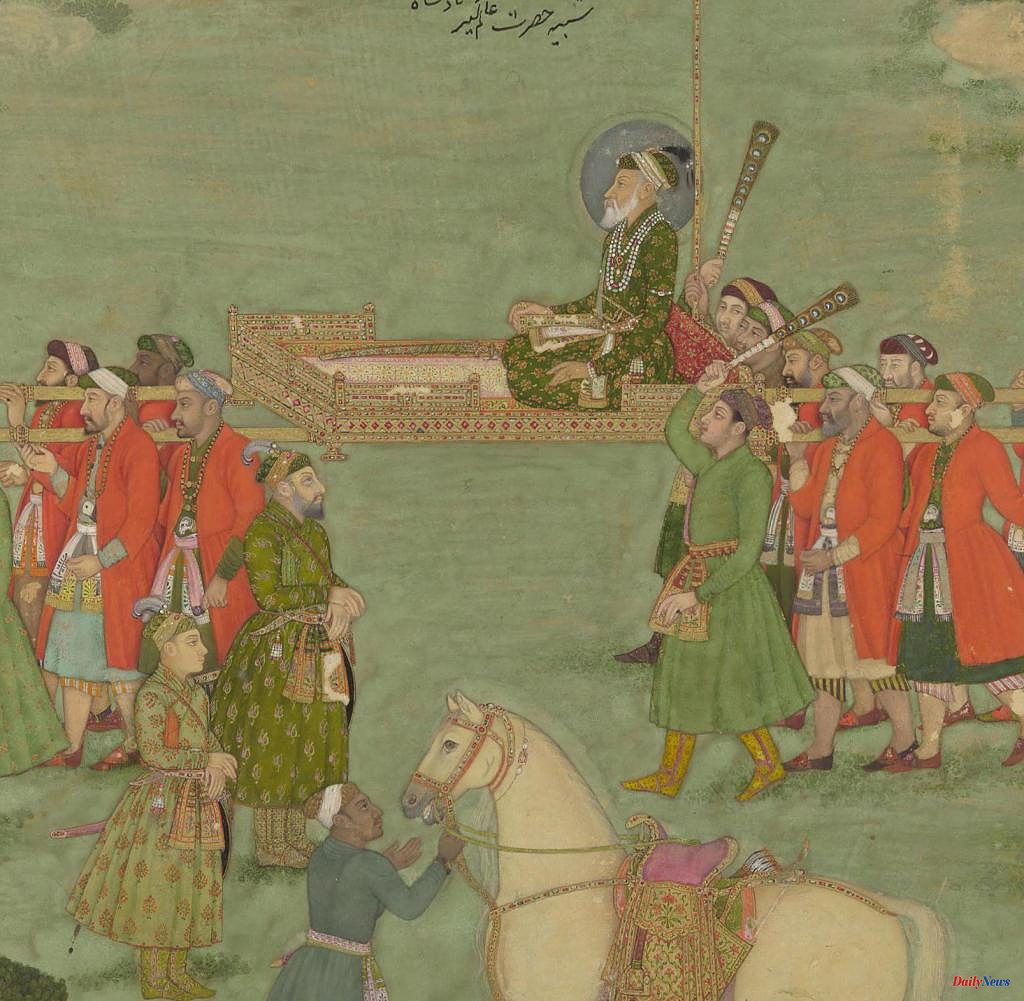In the course of the rediscovery of European colonial expansion, voices accusing the brutal Occident of the peacefulness of its victims are increasing. For example, the civilizations of Asia were not only culturally superior to those of Europe for thousands of years, but were also characterized by a lower degree of aggressiveness.
What the victims would think of this thesis, whose heads formed the skull pyramids of Genghis Khan or Timur Lenk, would have to be asked. Muhammad Aurangzeb (1618–1707) was one of the rulers who even ruined their own empire with their constant campaigns of war. On July 31, 1658 he ascended the peacock throne of the Mughal emperors in India.
The first Mughal emperor, Babur, originally made a name for himself as a warlord in Central Asia before invading India and crushing the Sultan of Delhi in 1526. Four other Mughal emperors had since incorporated large parts of the subcontinent into the empire, making it the largest state on Indian soil since the ancient Maurya Empire. A central administration and a huge army secured fabulous income for the Mughals.
Aurangzeb was the third son of Shah Jahan, who went down in history primarily as the builder of the Taj Mahal, which he had built as a tomb for his beloved wife Mumtaz Mahal near Agra. Aurangzeb was considered ascetic, power-conscious and devious, distinguished himself as a military leader and governor in the Deccan, the central Indian highlands and was above all a fervent Muslim. It is said that he was not only able to quote the Koran by heart, but that he is said to have performed a chilla, the forty-day meditation, every year.
When the father became seriously ill in 1657, the brothers quarreled about the successor. The rivals were no match for Aurangzeb's military talent. Two brothers were executed, another tortured to death in exile. Aurangzeb sent his recovered father into captivity. In 1659 he was sole ruler.
However, not all subjects in this vast empire saw it that way. In the first years of his reign, the new emperor had to deal with numerous uprisings. In addition, some princes in southern India refused to recognize the Mughals' claim to imperial power. They found powerful allies in the Marathas.
These Marathas were a farming society in the north-west of the Deccan, run by local notables who had their own troops and extensive family networks. In addition to agriculture, they also devoted themselves to mercenary work. As soldiers and tax collectors, they were gladly employed by regional sultans. In addition, they secured a lucrative extra income by extorting protection money and plundering border regions. And they were Hindus.
This put the Marathas in the sights of the devout Muslim Aurangzeb. Moreover, when one of these notables, Shivaji, succeeded in conquering an independent principality, the emperor sent a large army to the Deccan. A first campaign turned into a disaster. A second ended in a compromise peace. The Marathas had to surrender their fortresses, but were allowed to continue to collect taxes on their own account. When Shivaji declined the offer to join the imperial aristocracy, Aurangzeb had him captured. But the Marathas leader was able to flee and now intensified his small war against the Mughal Empire.
The conflict increasingly acquired a religious component. Unlike his predecessors, Aurangzeb paid little attention to the unstable balance between Muslim conquerors and the Hindu majority. Rather, he set a real Islamization in motion. "His Majesty, anxious to establish Islam, orders the governors of all provinces to destroy the schools and temples of the infidels," wrote a senior official. Aurangzeb's vision was an empire "in which a ruler who acted solely according to Islamic principles made Sharia the basis of coexistence for the benefit and best of the population," writes the Islamic scholar Stephan Conermann.
Numerous pleasures such as large festivals, the consumption of wine and other intoxicants, gambling and music events also fell victim to this goal. While at least some of his predecessors had tried to give the huge empire a firm hold through religious symbiosis, Aurangzeb presented himself as a strict ruler who was constantly engrossed in reading the Koran. He even went so far as to obtain the title of caliph from Mecca and Medina, in direct competition with the Ottomans.
They were far away, but the activities of the Marathas took place on his doorstep. After Shivaji's death, the leadership was taken over by his son Sambhaji. Finally, in 1682, as his generals found no means against guerrilla warfare, Aurangzeb decided to go personally to the Deccan. For the remaining 25 years before his death, the Mughal was to squander his empire's resources subjugating the Marathas.
In doing so, he extended the rule of the Great Mughals to almost the entire subcontinent - and at the same time made the empire ungovernable. Because at the edges, in the north, the tendency to detachment increased because of the huge distances. The tax administration collapsed so that the income was barely sufficient to finance the endless wars. And the authorities on the coasts lost interest and means to do something about the incursion of the European merchants who invaded the commercial networks of India with modern fleets.
When Aurangzeb died in 1707 at the age of 88, war broke out between his sons. Numerous princes took advantage of the years of fighting to break away from the empire. When the Persian Nader Shah conquered Delhi in 1739, there was no one left to stop him from stealing the Peacock Throne.
You can also find "World History" on Facebook. We are happy about a like.












